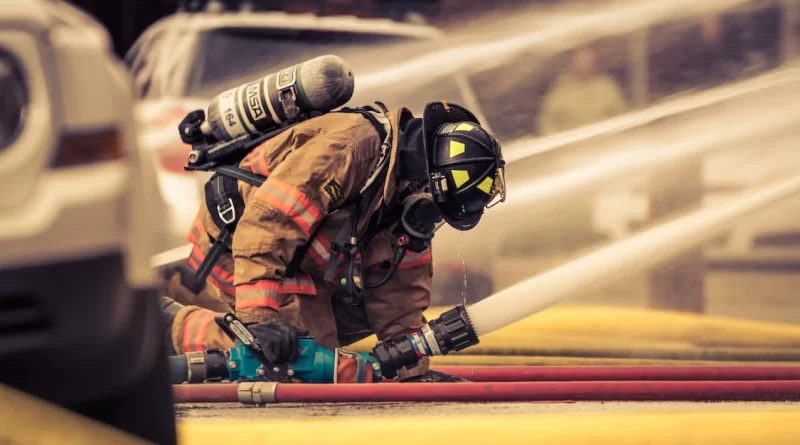4 Tips for Setting Up a Fire Response Plan for a Clothing Warehouse
Fire hazards are common all across the world. The United States too sees its fair share of fires.
According to the National Fire Protection Association (NFPA), fire departments in the US responded to over 1.3 million fires across the country in 2021. When you break down those numbers, you’ll find that a fire department responded to a fire somewhere in the US once every 23 seconds.
In most cases, fire incidents in the US are wildfires. However, many fire accidents take place in residential and commercial areas as well, especially in warehouses where a lot of flammable goods and materials are kept.
According to the NFPA’s 2022 Warehouse Structure Fires report, US fire departments responded to an average of 1,450 warehouse fires every year between 2016 and 2020. Apart from costing over $200 million in property damage, these fires also led to the death of two civilians and injured another 16.
Be it in the US or anywhere else around the world, warehouse fire accidents are commonplace, especially in the case of clothing warehouses where the chance of such accidents is extremely high. That’s why, for today’s discussion, we’ll share with you a few tips on setting up a fire response plan for your clothing warehouse.
#1 Conduct a Thorough Risk Assessment
Before you start working on the plan itself, you must first conduct a thorough risk assessment of the warehouse. Here, you’ll have to identify potential fire hazards like electrical systems, flammable materials, storage practices, and so on.
Evaluate the layout of your warehouse to determine potential bottlenecks or areas that could impede evacuation routes. Engage with a professional fire safety expert to assist you in identifying any risks that you might have overlooked.
By understanding the specific hazards present in your warehouse, you can develop targeted prevention strategies and response protocols.
#2 Establish Clear Emergency Procedures
Clearly defined and well-communicated emergency procedures are the backbone of an effective fire emergency action plan. Start by establishing a robust communication system within your warehouse. Ensure that fire alarms, emergency exits, and evacuation routes are properly marked and easily accessible.
Train your employees on fire safety protocols, including how to report a fire, evacuate the premises safely, and use fire extinguishers if appropriate. Designate assembly points outside the building where employees should gather after evacuating. Regularly conduct fire drills to practice and reinforce emergency procedures.
Equipping your employees with the knowledge and confidence to respond appropriately during a fire, can greatly enhance their safety and the effectiveness of your emergency plan.
#3 Install and Maintain Fire Suppression Systems
To minimize the impact of a fire, it is crucial to install and maintain appropriate fire suppression systems in your clothing warehouse. Automatic sprinkler systems are highly recommended as they can quickly suppress a fire, preventing it from spreading and minimizing damage. Make sure your sprinkler system is regularly inspected and serviced by professionals to ensure it is functioning optimally.
You must also consider installing fire extinguishers in key areas throughout the warehouse, particularly near potential fire sources. Train your employees on how to use fire extinguishers safely and effectively as well.
However, when buying fire extinguishers, double-check the brand and quality. After all, you wouldn’t want to end up with a product that is bad and could lead to several health problems, as was the case in Aqueous Film-Forming Foam (AFFF Fire Fighting Foam) lawsuit.
According to the AFFF Lawsuit, toxic chemicals used in manufacturing such firefighting foam can lead to prostate cancer, testicular cancer, and kidney cancer among other health problems. The forever chemicals present in the foam make the AFFF exposure dangerous to its users, which in your case could be you or any of your warehouse staff members.
TorHoerman Law revealed that airport and military firefighters, municipal firefighters, and industrial workers are at greater risk for exposure to this type of firefighting foam. Warehouses are known to use it too, which is why you should be careful not to buy this particular type of extinguisher.
#4 Regularly Review and Update the Plan
Fire safety regulations, equipment, and industry best practices evolve over time. It is vital to regularly review and update your fire emergency action plan to stay compliant with the latest standards and ensure its effectiveness. Set up a schedule for reviewing and testing your emergency procedures, and involve employees in the process to gather their feedback and insights.
Additionally, stay informed about any changes in fire safety regulations that may impact your warehouse operations. Consider conducting refresher training sessions for employees to reinforce fire safety protocols and provide updates on any changes to the emergency action plan. As long as you can maintain an up-to-date and adaptable fire emergency action plan, you can continually improve the safety of your clothing warehouse.
According to USAFacts, the number of structure fires in the country between 2013 and 2021 has seen somewhat of a steady increase. Many of these fire accidents took place in different warehouses, including clothing warehouses, and the damages were significant. Had proper fire prevention and mitigation measures been in place, this wouldn’t have been the case.
Therefore, if you want to avoid and tackle fires at your clothing warehouse, implement a proper fire emergency response plan, and for that, we suggest you take our tips into account. You’ll find them to be super helpful as you start implementing the plan and see it through till the end.

